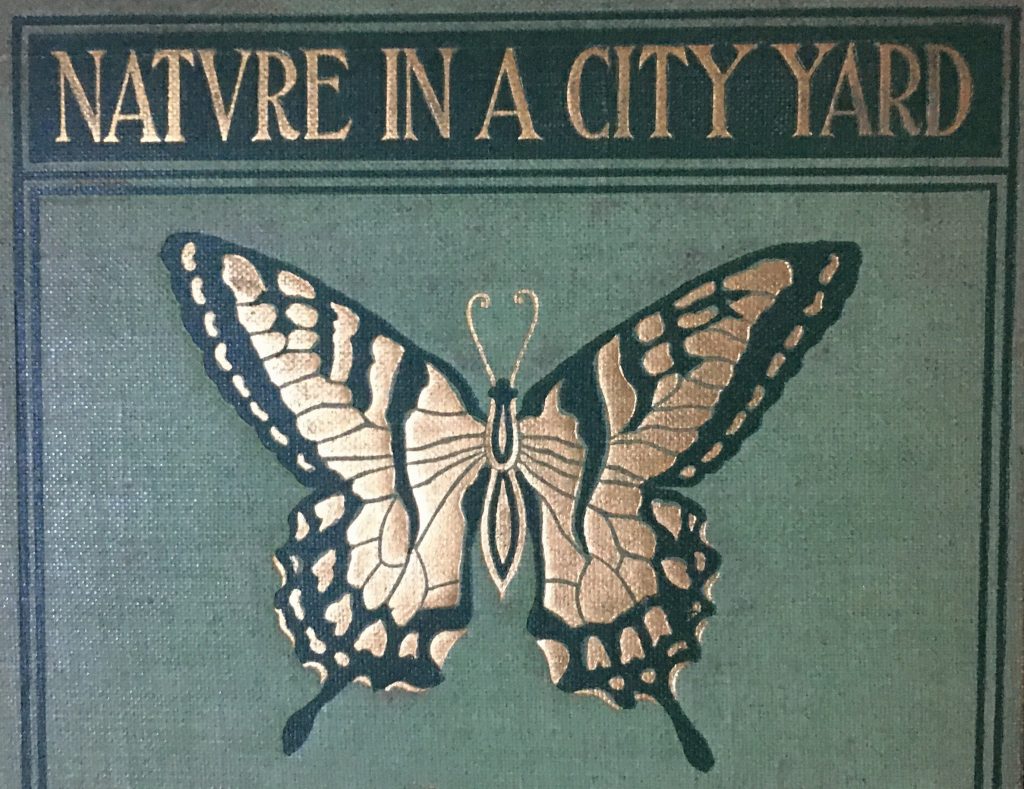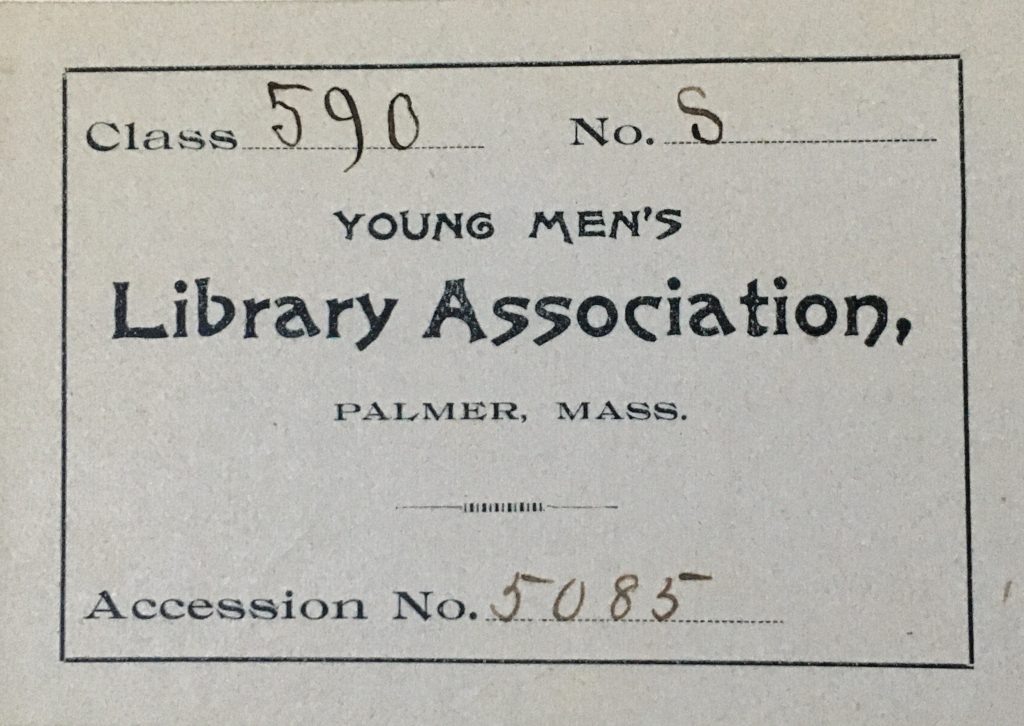
Looking skyward one is face to face with eternity. How futile, yet inevitable, to put the questions suggested to himself and to unanswering space and time by that vision! He tries to think back to the time in eternity when matter did not exist, and concludes it always did exist. And he wonders if the universe is evolution or creation. And is order mind, or has mind developed from order? And in the future suns burn out, only to have their ashes swept up by comets, scouts and scavengers of space, and hurled together with such fury that they become gaseous with heat, condense, reform into suns and planets, and the drama goes on again, endlessly. With a spectator? Ah, useless to ask and wonder. Truth is in a well, so deep she cannot come to us, nor we descend to her. Let us be content to love and admire, create and maintain, live and improve. It is all — and the best — we can do.
I CONFESS THAT I ALMOST GAVE UP ON WRITING A BLOG POST ON THIS BOOK. Charles Montgomery Skinner’s book is pleasant, yes, but at first glance there was precious little in his writing that really caught my eye. Perhaps the most significant thing about the book, from the standpoint of American environmental writing, is that way back in 1897, someone living in a Brooklyn home with a “common city yard, about eighteen feet by fifty” opted to write an entire book about encountering nature right there, at his back doorstep. I always imagined that early nature writers looked to wild places for inspiration, but the more I read of the more unknown exemplars, the more I find them encountering nature anywhere and everywhere. (Another example of a writer encountering nature in a city, in this case Cambridge, is Frank Bolles, in “Land of the Lingering Snow”.) The result is a book mostly about gardening, though here gardening extends to finding weeds in neighboring lots — even dandelions — and placing them in the backyard, along with more distinguished cultivars. Four chapters cover his garden through the seasons, with another chapter on Flowers and Insects. Skinner also uses the book to rail, on practically every other page, about a highly destructive, horribly obnoxious neighbor boy, Reginald McGonigle. The author strikes me as one compelled by employment to live in the city (he states that at the opening), doing his best to appreciate what nature it still offers. The sky, for instance, is still accessible to view from a backyard hammock, and that becomes the subject of a chapter, also. Indeed, in a couple of moments in the book, Skinner transcends his yard and the city to engage in cosmic wonder, and I found those passages most striking. From my viewpoint as a geologist, his finest one is this one, connecting stones in his yard to geologic ice ages and roping in an inaccurate interpretation of Milankovitch Cycles. Or at least, that is what I thought he was doing, based upon his reference to astronomical processes in the passage. But it turns out that the concept of Earth’s orbital cycles affecting the timing of ice ages was not actually proposed by Milutin Milanković until 1924. I can only guess that the notion of some sort of link between Earth’s orbit and ice ages had been identified much earlier.
Late fall and early spring are good seasons for the study of geology and mineralogy, as the vegetation is light, and the character of the ground may be seen. And our yard, in common with the other yards of the town and some thousands of miles of unyarded country, has had an interesting history. Had I stood 18,000 years ago where I stand to-day when i weed the hydrangeas and stir the earth about the “pinys,” I should have been facing a wall of ice, the receding glacier of the last Ice Age. And I and certain millions of others live on the debris of that glacier. This enormous mass, over a mile thick, moving sluggishly but irresistibly southward to its melting-point, brought with it millions of tons of sand, soil, gravel, and boulders, and dumped them into the Atlantic, building up from the bottom of that sea an island 120 miles long, and leaving parts of its moraine at other points between here and the Rockies. A conjunction of exterior planets had pulled at the earth by gravitative force, elongating its orbit, so that for some years the winters on the side slanted from the sun were lengthened and the summers shortened. The southern half of the globe will be frozen up in about 75,000 years, when the conjunction is repeated.
And in the light of such portentous events the back yard becomes important. I know the locale of certain fragments that I find there — speaking now of minerals and rocks, instead of the commoner rags, boots, bottles, and other materials of “made land.” The green mica I know comes from Fort George, New York; the green feldspar from a mile or two south of that point; the basalt from the palisades of the Hudson; the jasper from a now extinct reef of it which may be traced beneath the river; the serpentine from Hoboken; but mixed with these are specimens from the Hudson Highlands, the Adirondacks, the Connecticut hills, the Green Mountains, perhaps from those oldest hills of all, the Laurentians — a noble range, no doubt, that the glacier wore down to mere roots and stumps of its old self. When we record or guess upon these things, man and his work appear too trivial to think about, and time, space, mass, force, too great for understanding. There is, too, in the passing of the autumn, some hint of the cold death that must overtake the race of humankind, the world it lives in, and the solar system in which it moves. It is too vast and lonely a theme for the imagination. By potting the plants for winter blooming, tearing up the faded annuals, setting bulbs that are to flower in spring, and mulching the beds against the coming of cold weather, one can forget these grandeurs, and his mind is comforted.
WHAT A REMARKABLE PASSAGE! It is, without a doubt, the earliest philosophical exploration of geologic deep time (a term coined by John McPhee in 1981) that I have ever read. It is literally several decades before radiometric dating — back in a time when geologists had precious little knowledge of the age of past Earth events, or the age of the planet itself, for that matter. As such, this text alone makes the book worthy of acknowledgement. The rest of it — well, now at least the reader understands the focus on gardening — to keep at bay a looming sense of cosmic angst.

COMPARED TO SKINNER’S BACKYARD, MY COPY OF HIS BOOK HAS A MUCH LESS DRAMATIC HISTORY. It was once part of the collection of the Young Men’s Library Association in Palmer, Massachusetts, nowadays a town of about 12,000 people a few miles east of Springfield. It was last due back on March 16, 1960, and sometime after that was stamped “Discarded”.
That was a deep passage. Very interesting.
Not sure that the race of humankind will even make it to that cold death Skinner prophesies. . .
This is fantastic. Where do you normally get the books for these kinds of readings? I am curious if there is anywhere near Nashville with a library of books I could dive into.
Damien, the books I am reading for this project are ones I have been buying online, through Biblio.com, Ebay, Abebooks, and occasionally Amazon.com. It is a very expensive “hobby” of mine, but lately these volumes have replaced vacations due to our current pandemic. To find most of these titles, you would have to go to a university library, such as the University of Tennessee in Knoxville. There are a few exceptions — books that are still in print, amazingly enough. Henry Beston’s “The Outermost House” and Mary Austin’s “Land of Little Rain” are available in cheap paperback editions. But some of these titles haven’t been in print for over 100 years. There is one other option, though: if you are willing to read them as e-books, most of these are actually online through the Gutenberg Project or through Online Archive. Find a title that interests you, type it into Google along with “online”, and you may find it is there waiting for you. Most of the online copies are scans of original editions, complete with the illustrations from the 1880s and 1890s. Enjoy!